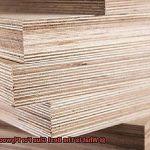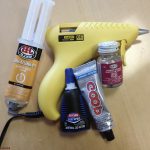Are you a rock enthusiast or a DIY enthusiast? If so, you’ve probably found yourself in a common predicament – how to securely and effectively glue rocks together for your projects. Whether you’re creating a stunning rock garden, crafting unique jewelry pieces, or building a rock sculpture, finding the perfect glue is crucial for ensuring longevity and stability. And let me tell you, amidst all the choices out there, one glue stands head and shoulders above the rest – epoxy resin.
Why is epoxy resin the ultimate game-changer in the realm of rock adhesion? Well, let me break it down for you. First and foremost, this stuff is strong. I mean seriously strong. It’s like superglue on steroids. No matter how big or heavy your rocks are, epoxy resin will keep them firmly bonded together. Unlike other adhesives that can crack or weaken over time, epoxy resin provides a long-lasting and virtually unbreakable bond. So whether your project is outdoors facing the elements or indoors needing some serious stability, epoxy resin has got your back.
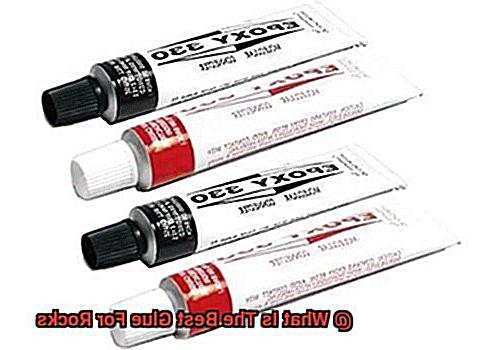
But wait, there’s more. Epoxy resin isn’t just strong; it’s also incredibly versatile. It can bond various types of rocks – from granite to limestone to quartz and even semi-precious stones. So no matter what kind of rocks you’re working with, epoxy resin can create a tight and seamless bond that leaves no room for movement or separation.
And here’s another reason why epoxy resin reigns supreme – it’s resistant to moisture, chemicals, and temperature changes. That means your glued rock creations can withstand extreme weather conditions without compromising their strength or appearance. Whether you’re dealing with scorching heat or frosty climates, rest assured that epoxy resin will stand the test of time.
Now let’s talk about application because we all know that some glues can be a real pain to work with. But not epoxy resin. It comes in two parts – the resin and the hardener – which you mix together in the right proportions to activate the bonding process. Once mixed, you’ve got a workable time that allows you to position and adjust your rocks before it fully cures. So no need to rush or stress about getting everything perfect in a split second. With epoxy resin, you’ve got the freedom to achieve the desired alignment and ensure a seamless result.
And last but certainly not least, let’s talk about aesthetics. Epoxy resin is a true showstopper when it comes to looks. Its
Types of Rocks and their Porosity
Contents
- 1 Types of Rocks and their Porosity
- 2 Intended Use of Glued Rocks
- 3 Epoxy Resin – Strong Bond and Versatility
- 4 Cyanoacrylate Glue (Super Glue) – Ideal for Bonding Smaller Rocks
- 5 Cement-Based Adhesives – Perfect for Porous Rocks
- 6 Fabric Glue or Jewelry Adhesive – Flexibility and Movement
- 7 Finding the Right Glue for Your Project
- 8 Preparing the Rocks Before Applying Glue
- 9 Conclusion
Selecting the right glue for your rock projects is crucial for creating a strong and long-lasting bond. Rocks come in different types, each with its own unique characteristics and porosity levels. Understanding how porosity affects the selection of glue is essential in ensuring a secure bond. In this article, we will explore the different types of rocks and their porosity levels, and how they influence the choice of glue.
Sedimentary Rocks: Nature’s Absorbent Sponges
Sedimentary rocks, like sandstone and limestone, are like nature’s absorbent sponges. They have moderate porosity, allowing them to absorb some amount of water. When bonding sedimentary rocks, it is important to choose a glue that can penetrate the pores and create a strong bond. Epoxy resin or cement-based adhesives are ideal choices for sedimentary rocks as they have excellent penetration capabilities.
Igneous Rocks: Solid as a Rock
Igneous rocks, such as granite and basalt, are solid as a rock when it comes to porosity. They have lower porosity compared to sedimentary rocks due to their compact structure. Since igneous rocks are resistant to water absorption, glues that form a strong bond on the surface are usually sufficient. Super glue or epoxy resin can be effective options for bonding igneous rocks.
Metamorphic Rocks: Beauty in Transformation
Metamorphic rocks, like marble and quartzite, undergo extreme heat and pressure, resulting in recrystallization and denser structures. As a result, they have low porosity levels. Similar to igneous rocks, choosing a glue that forms a strong bond on the surface is essential for bonding metamorphic rocks.
Epoxy Resin: The Ultimate All-Rounder
Epoxy resin is a versatile adhesive known for its strong bond and waterproof properties. It is suitable for various rock projects, providing excellent adhesion for both porous and non-porous rocks. Epoxy resin is the ideal choice for outdoor projects and those requiring durability.
Super Glue: Instant Bond, Lasting Connection
Super glue, or cyanoacrylate glue, is a popular choice for smaller rocks or attaching rocks to other materials. It forms a quick and strong bond and dries clear, making it perfect for delicate or intricate rock projects.
Cement-Based Adhesives: The Pore Penetrators
For highly porous rocks like sandstone or limestone, cement-based adhesives are effective choices. These adhesives penetrate the pores of the rock, creating a strong bond. They are commonly used in construction and masonry work but can also be suitable for rock crafts.
Intended Use of Glued Rocks
The world of glued rocks is a captivating realm that demands our attention. It is vital to acknowledge the intended use of these glued rocks when embarking on the quest for the perfect adhesive. So fasten your seatbelts, rock enthusiasts, as we embark on a journey through the diverse purposes and enchanting possibilities of glued rocks.
Crafting, oh what wonders can be created with glued rocks in the realm of crafting. These mesmerizing stones can be transformed into jaw-dropping sculptures, breathtaking mosaics, and intricate additions to other craft projects. The glue that binds them must possess unwavering strength to securely hold these rocks together, yet it must also possess the flexibility to endure movement and stress.
Home decor, where beauty meets functionality, is another realm that beckons the use of glued rocks. These magical stones can serve as exquisite accents in decorative pieces or even find purpose as candle holders or paperweights. The glue employed here should not only boast steadfast adhesion but should also be aesthetically pleasing, for it may grace the final masterpiece.
But wait, there’s more. For those who navigate the world of jewelry making, glued rocks add a touch of brilliance to their creations. The chosen adhesive must possess a strong grip to keep these precious stones securely in place. It must also be safe for skin contact and resilient against water and sweat, ensuring that these dazzling pieces stand the test of time.
And let us not forget the grandeur of construction projects involving rocks. From sturdy stone walls to majestic pathways, these endeavors require a different breed of adhesive altogether. A glue that can withstand the harsh elements of the great outdoors and guarantee long-term stability is essential in this realm.
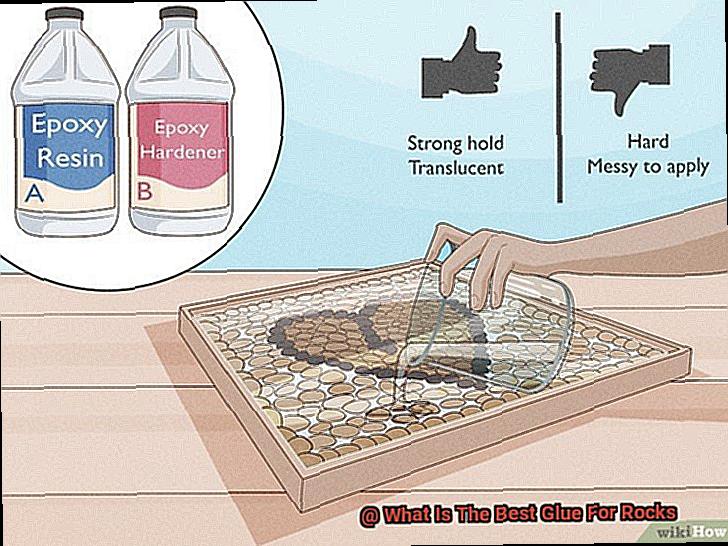
Now, how does one select the ideal glue for their project? Fear not, for it is a simple endeavor. Merely consider the specific requirements of your undertaking. Different glues possess varying strengths, drying times, and resistance levels to factors like moisture or temperature changes. By comprehending the demands of your project, you can unveil the perfect adhesive for the task at hand.
Ah, and for those who hold the earth dear, remember to opt for glues that are non-toxic and water-based whenever possible. Let sustainability be your guiding star as you traverse the realm of glued rocks.
Epoxy Resin – Strong Bond and Versatility
Epoxy resin – it’s time to take a deep dive into the world of this remarkable adhesive that can transform your crafting, home decor, and construction projects. Known for its strong bond and versatility, epoxy resin is the ultimate choice for bonding rocks together.
What sets epoxy resin apart from other adhesives? Let’s break it down. Composed of two components – a resin and a hardener – when mixed in the correct proportions, this adhesive becomes a force to be reckoned with. However, you’ll need to work quickly as epoxy resin has a limited working time before it starts to harden.
But here’s where the magic happens – epoxy resin forms an astonishingly robust bond capable of withstanding heavy loads and resisting environmental factors like moisture and temperature changes. Whether you’re bonding porous or non-porous rocks, epoxy resin has got your back. It effortlessly adheres to smooth or rough surfaces, granting you the flexibility to tackle any project.
But that’s not all. Epoxy resin goes beyond bonding rocks; it excels at bonding rocks with other materials like wood or metal. Additionally, it provides a durable and long-lasting finish, giving your bonded rocks a polished and professional look.
However, don’t forget that proper surface preparation is key. Before using epoxy resin, ensure your surfaces are clean, dry, and free from contaminants. This step guarantees optimal adhesion.
Cyanoacrylate Glue (Super Glue) – Ideal for Bonding Smaller Rocks
Then allow me to introduce you to the superhero of adhesives – cyanoacrylate glue, also known as Super Glue. This formidable adhesive is the perfect solution for bonding smaller rocks together, delivering a rapid and robust bond that will undoubtedly make your projects rock.
So, what makes cyanoacrylate glue the ultimate match for smaller rocks? Let’s delve into the details:
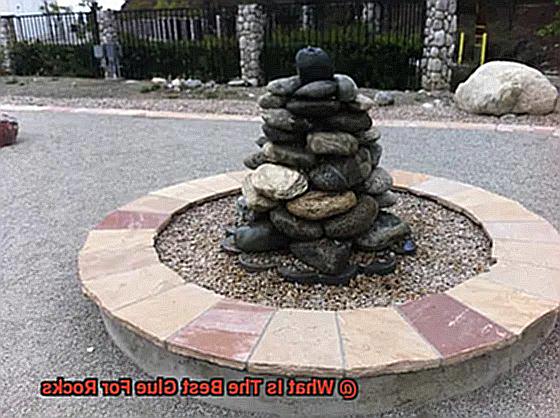
- Lightning-fast drying: Renowned for its quick-drying properties, cyanoacrylate glue will have your rocks securely bonded in a matter of seconds to minutes, allowing you to swiftly advance with your project.
- Unbreakable bond: Cyanoacrylate glue forms an unyielding molecular-level bond between the rocks. This means your creations will possess a tight and enduring connection that can withstand the relentless test of time.
- Surface preparation: To ensure an impeccable bond, it is vital to meticulously cleanse the surfaces of your rocks from any lurking dirt or debris. Additionally, slightly roughening the surfaces with sandpaper or a file will create an expanded surface area for the glue to adhere to, intensifying the strength of the bond.
- Effortless application: Applying cyanoacrylate glue is an absolute breeze. Simply apply a small amount to one surface, firmly press it against the other rock, and hold them together for a few minutes. This allows the glue to set and establish a steadfast bond.
- Unmatched strength: While cyanoacrylate glue dries rapidly, it is recommended to leave the bonded rocks undisturbed for at least 24 hours. This ensures that the bond reaches its maximum strength and durability.
It is important to note that cyanoacrylate glue may not be suitable for large or weighty rocks that demand an exceptionally robust hold. In such cases, alternative adhesives like epoxy or construction adhesive might prove more advantageous.
Remember, safety always comes first. When working with cyanoacrylate glue, it is imperative to adhere to the manufacturer’s instructions and operate in a well-ventilated area while donning protective gloves.
Cement-Based Adhesives – Perfect for Porous Rocks
When it comes to bonding porous rocks, cement-based adhesives are the perfect choice. These specialized glues are designed specifically for materials with high porosity, such as natural stones, concrete, and masonry.
What sets cement-based adhesives apart is their unique ability to penetrate and bond with the porous surface of rocks. Unlike other types of glues that simply sit on the surface, cement-based adhesives create a strong chemical and mechanical bond by seeping into the pores of the rocks. This ensures a bond that is not only long-lasting but also durable enough to withstand the test of time.
Cement-based adhesives come in different forms, including powders and pre-mixed pastes. The powder form requires mixing with water to create a workable paste, while pre-mixed pastes are ready to use right out of the container. Regardless of the form, both options offer excellent bonding strength and durability.
Thin-set mortar is one popular type of cement-based adhesive. Although commonly used in tile installations, it is also suitable for bonding rocks. Thin-set mortar consists of cement, sand, and a polymer additive that enhances its bonding properties. This adhesive is easy to work with and provides a long-lasting bond.
Another type of cement-based adhesive worth mentioning is hydraulic cement. It sets and hardens when it comes into contact with water, making it perfect for bonding rocks in wet or damp environments. Hydraulic cement offers excellent moisture resistance and can withstand extreme temperature changes without losing its bond.
To achieve the best results when using cement-based adhesives for bonding rocks, it is crucial to properly prepare the surface by cleaning it and removing any loose debris or dirt. This ensures maximum adhesion and eliminates weak spots in the bond. Additionally, following the manufacturer’s instructions regarding curing time is essential for optimal results.
Fabric Glue or Jewelry Adhesive – Flexibility and Movement
When it comes to gluing rocks, flexibility and movement are key considerations. Whether you’re working on a fabric-based project or creating stunning rock jewelry pieces, choosing the right adhesive is crucial. Let’s explore the differences between fabric glue and jewelry adhesive to help you make an informed decision.
Fabric glue is a reliable choice for attaching rocks to fabric-based materials such as clothing, bags, or accessories. Its specially formulated composition allows it to bond fabric together while still offering flexibility when dried. This means that your rock creations won’t feel stiff or restricted when you wear them. With fabric glue, the application process is a breeze – simply apply it directly onto the fabric surface and let it work its magic.
On the other hand, jewelry adhesive is a heavyweight contender in the world of rock bonding. Specifically designed for jewelry-making projects, this adhesive can handle the unique challenges that come with wearing jewelry. It provides a stronger and more durable bond compared to fabric glue. This is especially important for dazzling rock pendants or earrings that may experience frequent movement and stress. Jewelry adhesive is also designed to withstand moisture, temperature changes, and regular handling, ensuring that your stones stay securely attached.
To break it down even further:
Fabric Glue:
- Suitable for fabric-based projects like clothing or accessories.
- Offers flexibility and movement capabilities.
- Easy to use – no additional tools needed.
Jewelry Adhesive:
- Ideal for jewelry-making projects.
- Provides a stronger bond for more durability.
- Designed to withstand moisture, temperature changes, and frequent handling.
- Offers excellent flexibility and movement capabilities.
When choosing between fabric glue and jewelry adhesive, consider the specific requirements of your project. If you’re working on a fabric-based project involving rocks, fabric glue is your go-to choice. It offers the necessary flexibility and ease of use. However, if you’re creating stunning rock jewelry pieces that require ultimate strength and resilience, jewelry adhesive is what you need. It can handle constant movement and ensure that your stones remain securely attached.
In conclusion, both fabric glue and jewelry adhesive have their merits when it comes to gluing rocks. Fabric glue provides flexibility and movement for fabric-based projects, while jewelry adhesive offers a stronger bond and durability for jewelry-making. So, choose the adhesive that suits your project needs and get ready to rock those creations.
Finding the Right Glue for Your Project
When it comes to finding the right glue for your rock project, there are several factors to consider. The type of glue you choose will depend on the type of rocks you are working with and the intended use of your project.
Firstly, consider the porosity of the rocks. Porous rocks, like sandstone or limestone, require a glue that can penetrate their surface and create a strong bond. Epoxy glues are often recommended for their ability to bond effectively with porous rocks. They come in two parts – resin and hardener – which need to be mixed together before application. Once mixed, epoxy glue forms a strong bond that is resistant to moisture and temperature changes.
On the other hand, if you’re working with non-porous rocks like granite or marble, construction adhesive may be your best bet. Designed for bonding heavy materials, construction adhesive provides a strong bond that can withstand various weather conditions. It’s suitable for both indoor and outdoor projects, making it a versatile choice.
For smaller projects or crafts, a strong craft glue labeled as suitable for use with rocks or other porous materials may be sufficient. These glues offer a good balance between strength and ease of use, making them ideal for jewelry-making or attaching smaller rocks to surfaces.
Drying time is another crucial factor to consider. Some glues dry quickly, while others require more time to fully cure. This is especially important if you’re working on a project that requires precise positioning or if you need to apply multiple layers of glue.
It’s worth mentioning that certain types of glues are specifically formulated for use with rocks or other porous materials. These glues are designed to bond effectively without damaging the natural appearance of the rocks.
Remember to always read the instructions provided by the manufacturer before using any glue. Some glues may require special preparation or application techniques to ensure a strong bond. And of course, don’t forget to follow safety precautions when working with glue, such as wearing gloves and working in a well-ventilated area.
To ensure the glue bonds effectively and doesn’t damage the rocks or alter their appearance, it’s always recommended to test the glue on a small inconspicuous area before applying it to your entire project.
Preparing the Rocks Before Applying Glue
Creating stunning rock projects, such as sculptures or mosaics, requires more than just the right glue. Properly preparing the rocks before applying glue is essential for a strong and long-lasting bond. In this blog post, we will guide you through the essential steps to prepare your rocks for gluing, ensuring that your project stands the test of time.
Step 1: Thoroughly Clean the Rocks
To remove any dirt, dust, or debris that may hinder the adhesive’s effectiveness, start by giving your rocks a thorough cleaning. Rinse them under running water or use a soft brush to scrub away any grime. Make sure the rocks are completely dry before moving on.
Step 2: Roughen the Surfaces
Smooth surfaces don’t provide enough texture for glue to adhere properly. To create a roughened surface, you have a few options:
- Sandpaper: Gently rub sandpaper against the rock’s surface in a circular motion, creating small scratches and grooves. Cover all areas that will come into contact with the glue.
- Wire Brush or Chisel: For a more textured surface, use a wire brush or chisel to create deeper grooves and ridges. Be cautious to avoid unintentional damage or chipping.
Step 3: Clean Again
After roughening the surfaces, clean the rocks once more to remove any loose particles or dust created during the roughening process. Rinse them under water or use a soft brush to sweep away debris.
Step 4: Ensure Complete Dryness
Moisture can weaken the bond between rocks. Allow the rocks to air dry naturally or pat them dry with a clean cloth before applying the glue.
Step 5: Plan and Organize
Before applying the glue, take time to plan and organize the layout of your rock arrangement. This helps you determine the best positioning and ensures your satisfaction with the final result. A clear plan is crucial before starting the gluing process.
AySbHYnUtqk” >
Also Read: How To Glue Rocks Together?
Conclusion
When it comes to bonding rocks together, finding the best glue is essential. After careful consideration and research, it is clear that there are a few top contenders in the market. However, one glue stands out above the rest – epoxy resin. This remarkable adhesive not only provides a strong bond between rocks but also offers durability and longevity.
Epoxy resin possesses unique properties that make it ideal for rock bonding. Its ability to penetrate porous surfaces ensures a secure and lasting connection between rocks of various textures and sizes. Additionally, epoxy resin dries clear, leaving no visible traces of adhesive on the surface, maintaining the natural beauty of the rocks.
What sets epoxy resin apart from other glues is its exceptional strength. It forms an incredibly strong bond that can withstand pressure, vibrations, and even extreme weather conditions. Whether you’re creating rock sculptures or repairing a broken stone structure, epoxy resin will provide the stability needed for long-lasting results.
Furthermore, epoxy resin offers versatility in application. It can be used on both indoor and outdoor projects, making it suitable for various rock-related endeavors. From crafting stunning rock mosaics to constructing sturdy garden features, this glue proves its reliability time and time again.
Not only does epoxy resin excel in functionality, but it also boasts ease of use. With simple instructions to follow, anyone can achieve professional-grade results without prior experience or expertise. Its quick-drying nature allows for efficient work while ensuring minimal waiting time.
In conclusion, when it comes to gluing rocks together effectively and efficiently, epoxy resin reigns supreme. Its superior strength, versatility in application, ease of use, and ability to maintain the natural aesthetics of rocks make it the best choice for any rock-related project.


